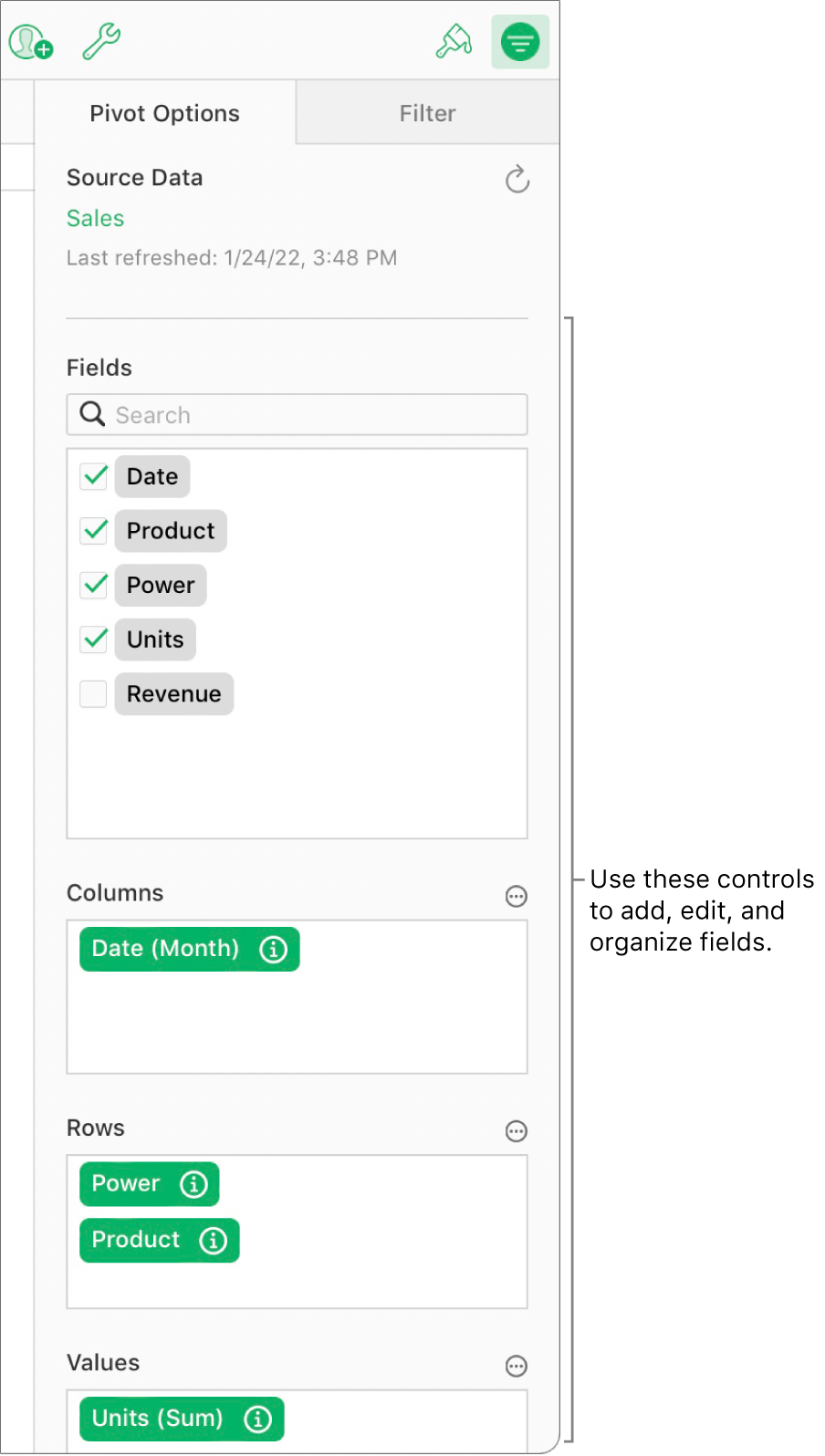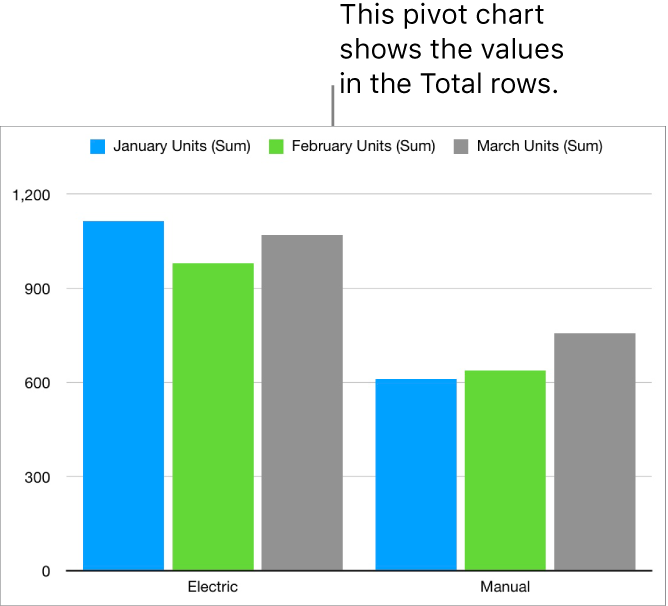
Intro to pivot tables
A pivot table is a special type of table that organizes and summarizes data from another table (containing the source data). You can create pivot tables to analyze data, quickly group and calculate values, and identify interesting patterns and trends.

You can create a pivot table from any other table in your spreadsheet that contains at least one populated, nonheader cell, and doesn’t contain any cells merged across adjacent rows. If you update the source data in the other table, you need to refresh the pivot table to see the changes.
You choose what data to include in your pivot table in the Pivot Options tab of the Organize ![]() sidebar, shown below. To add data, you add the fields that correspond with the columns of source data you want to include. Fields can be added to three sections—Columns, Rows, and Values. The placement and order of fields determine how your data is grouped in the pivot table.
sidebar, shown below. To add data, you add the fields that correspond with the columns of source data you want to include. Fields can be added to three sections—Columns, Rows, and Values. The placement and order of fields determine how your data is grouped in the pivot table.

For example, if you place a field (Power) in the Rows section, a row is added to the pivot table for each unique value (Electric and Manual) in the corresponding column in your source data. If you add another field (Product) to the Rows section, you create a hierarchy of rows, resulting in distinct groups of data (for example, electric bicycles and manual bicycles, as shown in the Sales Pivot table above).
Value fields use functions, such as sum or average, to summarize data. You can change which function is used, how to display the results in the pivot table, and whether you want to see Totals and Grand Totals.
To include only specific source data in the pivot table, you can use Quick Filters and create filtering rules. See Filter data in tables.
You can also visualize trends in your pivot table by creating a chart. When you create a pivot chart, you can plot different data (such as Grand Totals) based on the cells you select. The pivot chart below displays the values in the Total rows (Electric and Manual) in the pivot table above. See Create a chart from pivot table data.

If you’ve already created a pivot table using Microsoft Excel, you can upload and edit it in Numbers for iCloud.
Tip: You can also learn about pivot tables in the Pivot Table Basics template. To open it, in the spreadsheet manager, click the Create Spreadsheet button ![]() in the toolbar, then double-click the Pivot Table Basics template. In the template, click the tabs near the top of the template (Pivot Table Basics and Pivot Table Practice) to view the different sheets.
in the toolbar, then double-click the Pivot Table Basics template. In the template, click the tabs near the top of the template (Pivot Table Basics and Pivot Table Practice) to view the different sheets.
To get started, see Create a pivot table.